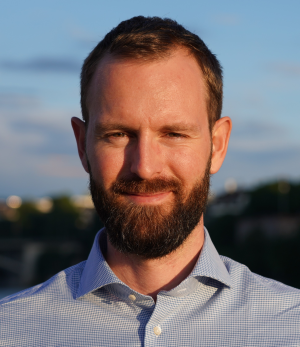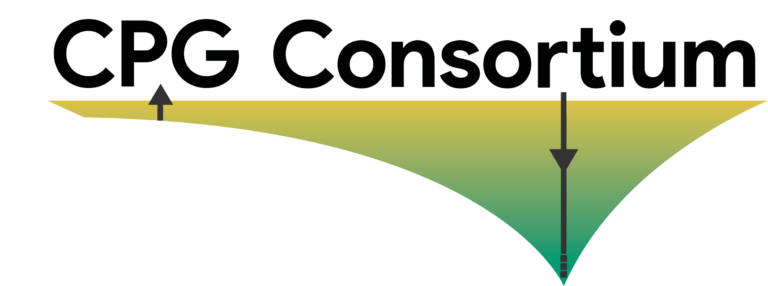
Mailing Address
Jasper de Reus
Geothermal Energy & Geofluids
Institute of Geophysics
NO F 61.1
Sonneggstrasse 5
CH-8092 Zurich Switzerland
Contact
| Phone | +41 44 633 2751 |
| adereus(at)ethz.ch | |
| Link |
Administration
| Prisca Maurantonio | |
| +41 44 632 3465 | |
| prisca.maurantonio@eaps.ethz.ch | |
Publications
[Go to Proceedings Refereed] [Go to Proceedings Non-Refereed] [Go to Theses]
Underlined names are links to current or past GEG members
REFEREED PUBLICATIONS IN JOURNALS
1.
Schifflechner, C., J. de Reus, S. Schuster, A. Corpancho Villasana, D. Brillert, M.O. Saar, and H. Spliethoff, Paving the way for CO2-Plume Geothermal (CPG) systems: A perspective on the CO2 surface equipment, Energy, 305, 2024. https://doi.org/10.1016/j.energy.2024.132258 [Download] [View Abstract]Subsurface reservoirs play an important role in decarbonizing the energy sector, be it through geothermal energy production or carbon capture and storage. In recent years, there has been an increasing interest in CO2-Plume Geothermal systems, which combine carbon sequestration with geothermal, using CO2 instead
of water as a subsurface heat and pressure energy carrier. Since CO2-Plume Geothermal systems are added to full-scale CO2 Capture and Sequestration operations, all of the initially injected CO2 is ultimately stored. CO2-Plume Geothermal, therefore constitutes of both CO2 Capture Utilization as well as Storage. This paper assesses the huge technical potential of this technology, identifying a potentially highly relevant market for CO2 equipment manufacturers and discusses the current research demand, based on the current state of the art of CO2 equipment. Both temperature and pressure levels are significantly lower than CO2 turbine designs investigated and proposed so far for other applications, such as waste heat recovery. For a depth of 5 km, a typical one-stage radial turbine design might have a rotational speed of 23’000 rpm to 42’000 rpm and an impeller diameter between 96 mm to 155 mm. Together with technology-specific requirements, due to produced fluid impurities, it becomes evident that significant further development efforts are still necessary.
[back to Top of Page]
PROCEEDINGS NON-REFEREED
5.
Schifflechner, C., A.J. de Reus, S. Hartmut, and M.O. Saar, The potential of CO2-Plume Geothermal (CPG) Systems for CO2 component manufacturers: opportunities and development needs, 7th International Seminar on ORC Power Systems, 2023, 2023. [Download PDF] [View Abstract]Subsurface reservoirs play an important role in decarbonizing the energy sector, be it through
geothermal energy production or carbon capture and storage (CCS). In recent years, there has been an
increasing interest in CO2-Plume Geothermal (CPG) systems, which combine CCS with geothermal,
using CO2 instead of water as a subsurface heat and pressure energy carrier. As explained later in the
paper, applying CO2 as a subsurface working fluid can be more efficient than water as it has a higher
mobility (inverse kinematic viscosity) and as its large thermal expansion coefficient results in a
thermosiphon effect that reduces the pumping power required. CO2 can also directly be utilized in a
turbine for power generation. Furthermore, since CPG systems are added to full-scale CO2 Capture and
Sequestration operations, all of the initially injected CO2 is ultimately stored. CPG therefore constitutes
of both CO2 Capture Utilization as well as Storage.
This paper assesses the huge technical potential of the CPG technology, identifying a potentially highly
relevant market for CO2 equipment manufacturers and discusses the current research demand, based on
the current state of the art of CO2 equipment. Both temperature and pressure levels are significantly
lower than CO2 turbine designs investigated and proposed so far for other applications, such as waste
heat recovery. Together with CPG-specific requirements, due to produced fluid impurities, it becomes
evident that significant further development efforts are still necessary regarding future commercial CPG
CO2 turbines.
4.
de Reus, A.J., V. Karpan, D.W. van Batenburg, and E. Mikhaylenko, Use of Tracers in the Alkaline Surfactant Polymer Pilot in West Salym, European Symposium on Improved Oil Recovery, 2019, pp. 1-14, 2019. https://doi.org/10.3997/2214-4609.201900065 [Download]
3.
Karpan, V., A.J. de Reus, S. Milchakov, S. Volgina, I. Edelman, Y. Volokitin, D. van Batenburg, and A. Groman, Towards an Economically Viable (A)SP Flooding Project in West Salym, European Symposium on Improved Oil Recovery, 2019, pp. 1-14, 2019. https://doi.org/10.3997/2214-4609.201900066 [Download]
2.
Volokitin, Y., M. Shuster, V. Karpan, E. Mikhaylenko, E. Bondar, M. Podberezhny, A. Rakitin, D.W. van Batenburg, A.R Parker, S. de Kruijf, and A.J. de Reus, Results of Alkaline-Surfactant-Polymer Flooding Pilot at West Salym Field, SPE EOR Conference, 2018. https://doi.org/10.2118/190382-MS [Download]
1.
van der heyden, F.H.J., E. Mikhaylenko, A.J. de Reus, D.W. van Batenburg, V.M. Karpan, and Y. Volokitin, Injectivity Experiences and its Surveillance in the West Salym ASP Pilot, European Symposium on Improved Oil Recovery, 2017, pp. 1-11, 2017. https://doi.org/10.3997/2214-4609.201700243 [Download]


